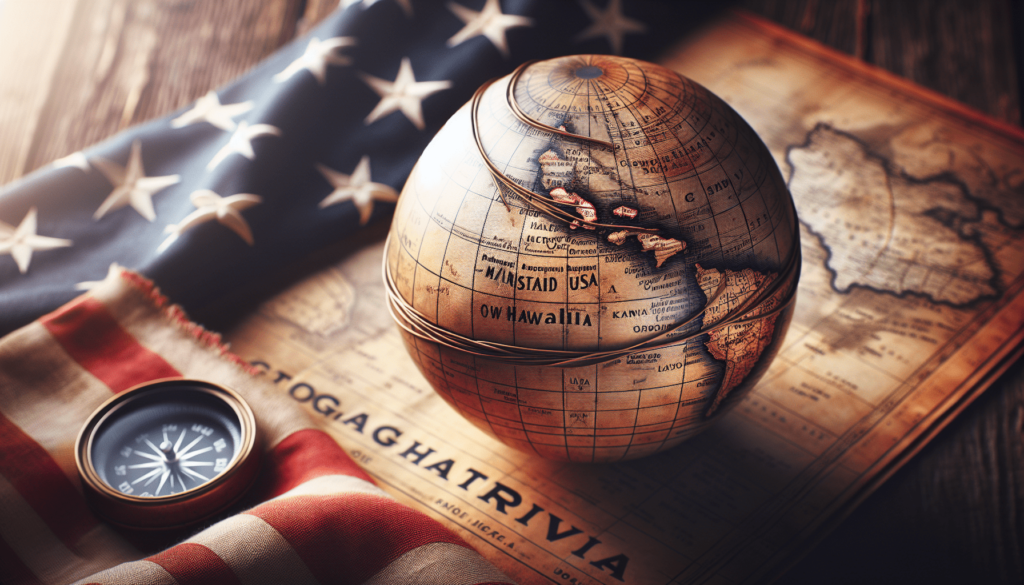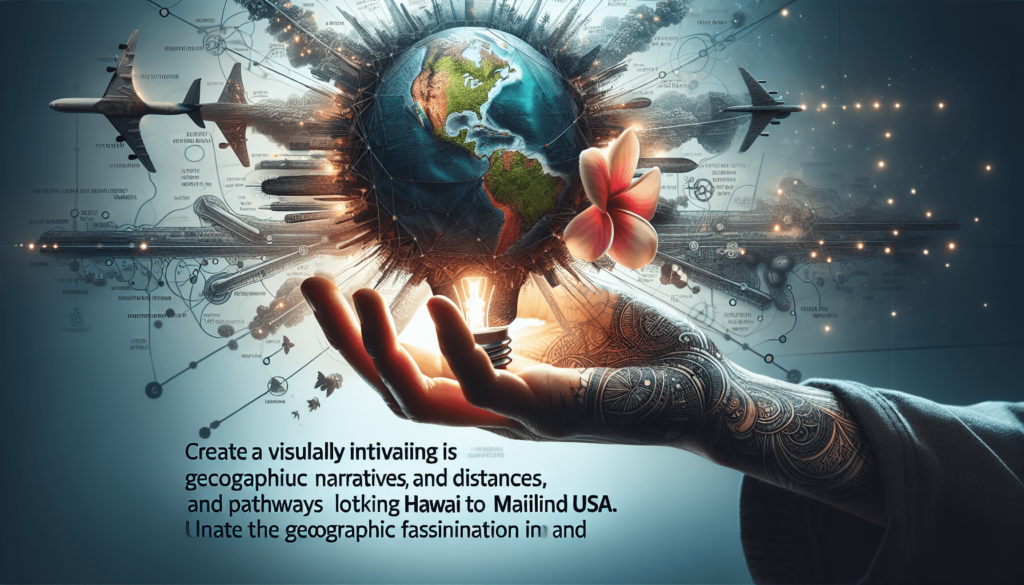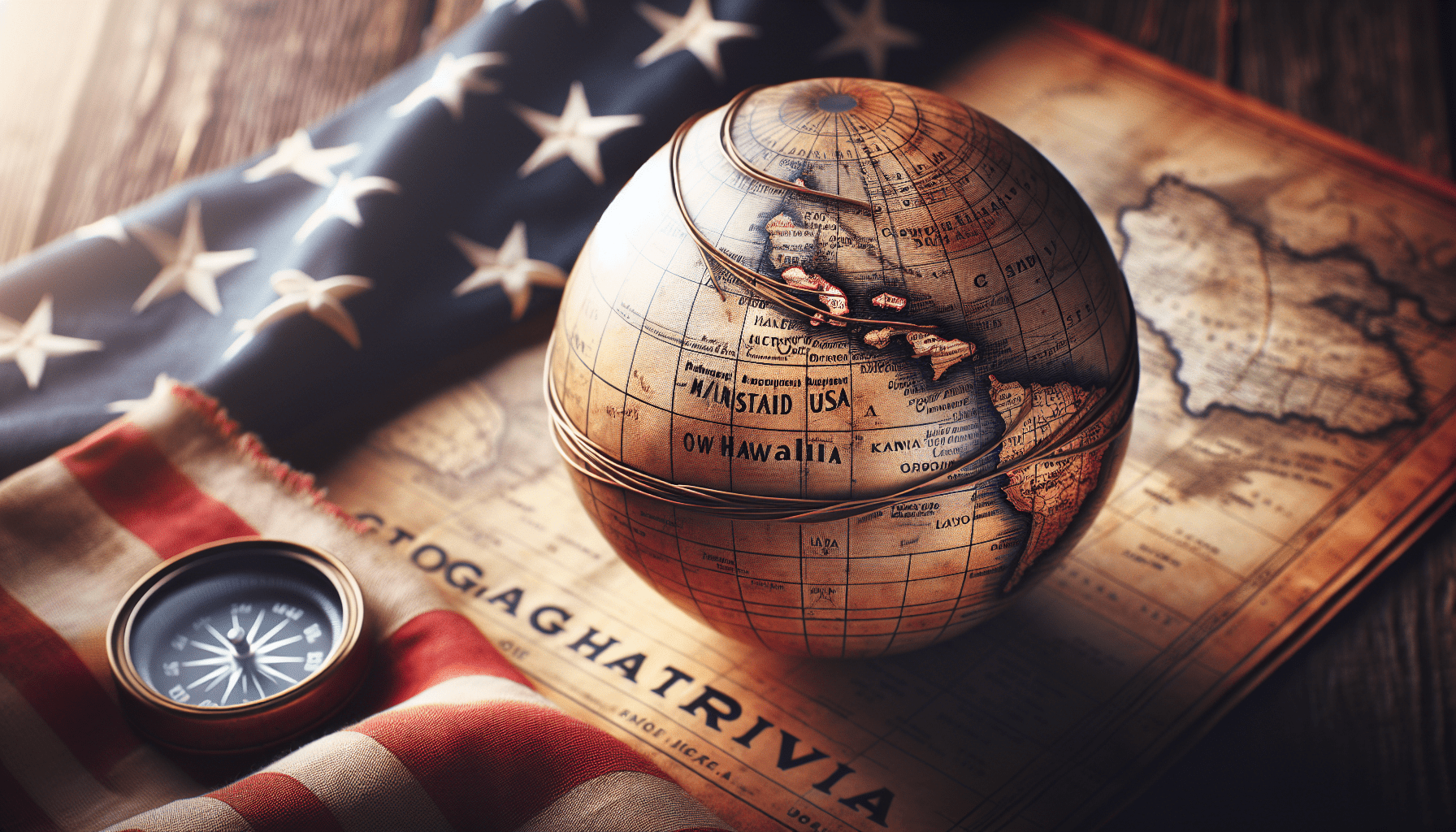Did you ever wonder which state is closest to the beautiful islands of Hawaii? It may come as a surprise, but the answer is actually Alaska! While it might seem counterintuitive, Alaska is the state that lies closest to the Hawaiian archipelago. Despite the vast distance between these two states, their proximity can be attributed to the unique curve of the Earth’s surface. So, if you’ve been dreaming of visiting both Alaska and Hawaii, rest assured knowing that they are closer than you might think!
Geographical Location
Hawaii, known for its stunning beaches and vibrant culture, is located in the central Pacific Ocean. Situated about 2,400 miles southwest of California and approximately 3,800 miles southeast of Japan, the archipelago is a truly unique and captivating destination.
Description of Hawaii’s location in the Pacific Ocean
Hawaii is a group of islands that extends across approximately 1,500 miles in the Pacific Ocean. It is positioned in the region known as Polynesia and is comprised of eight main islands: Hawaii (also referred to as the Big Island), Maui, Oahu, Kauai, Molokai, Lanai, Niihau, and Kahoolawe. These islands, formed by volcanic activity, are surrounded by the vast Pacific Ocean, giving Hawaii its incredible beauty and distinct character.
How Hawaii is an archipelago
An archipelago is a cluster of islands formed by volcanic activity or continental shifts. Hawaii, with its eight main islands, fits perfectly into this definition. Each island has its own unique topography, ranging from the dramatic volcanic landscapes of the Big Island to the lush rainforests of Kauai. This archipelago showcases the remarkable power of nature and has become a paradise for adventurers, beachgoers, and nature enthusiasts alike.
Discussion on its isolation from other states
One of the fascinating aspects of Hawaii is its isolation from other states. Due to its Pacific location, the archipelago is distinctively separated from the mainland United States. It takes approximately six hours to fly from California to Hawaii, which highlights the significant distance between the two regions. This isolation has allowed Hawaii to develop a culture, ecology, and lifestyle that are unique and different from those found on the mainland.
Alaska
Distance between Hawaii and Alaska
While Alaska and Hawaii are both states in the United States, they are separated by quite a significant distance. The distance between the two states is approximately 3,900 miles, making it even farther than the distance between Hawaii and the mainland. Despite being geographically distant, Alaska and Hawaii are still connected through their shared status as states within the United States.
Geographical facts about Alaska
Alaska, known as “The Last Frontier,” is the largest state in the United States, covering a staggering 663,268 square miles. This vast land is home to breathtaking mountains, glaciers, and diverse wildlife. From the awe-inspiring Denali, North America’s highest peak, to the expansive tundra and pristine national parks, Alaska offers unparalleled natural beauty.
Availability of flights between the two states
Although the distance between Hawaii and Alaska is considerable, there are several airlines that provide regular flights between the two destinations. The flight duration from Honolulu, the capital of Hawaii, to Anchorage, the largest city in Alaska, is approximately six hours. These flights serve as a vital transportation link between the two states and facilitate people’s movement for tourism, business, and family connections.
Comparison of land area and population
When comparing the land area and population of Alaska and Hawaii, there are significant differences. Alaska covers a vast land area of over 663,000 square miles, making it more than twice the size of Texas. In contrast, Hawaii has a land area of only 10,931 square miles, making it one of the smallest states in terms of land area. In terms of population, Alaska has a population of around 731,000 residents, whereas Hawaii has a more populous community with approximately 1.4 million residents.

California
Distance between Hawaii and California
California, located on the west coast of the United States, is the closest mainland state to Hawaii. The distance between Honolulu, the capital of Hawaii, and Los Angeles, the largest city in California, is approximately 2,470 miles. This relatively shorter distance compared to other states makes California a popular and convenient destination for travelers looking to venture to Hawaii.
Geographical facts about California
California is renowned for its diverse landscapes, stretching from the Pacific coastline to the towering Sierra Nevada mountains. The state is also home to iconic landmarks such as the Golden Gate Bridge in San Francisco, the breathtaking Yosemite National Park, and the glamorous city of Los Angeles. California’s unique geography provides a stunning contrast of natural beauty and urban sophistication.
Comparison of land area and population
When considering land area, California is the third-largest state in the United States, covering approximately 163,696 square miles. In contrast, Hawaii’s land area is significantly smaller, making it only around 7% the size of California. However, California’s population of over 39 million people is significantly larger than Hawaii’s, making it a more densely populated state.
Frequent flight connections
Due to the relatively short distance between Hawaii and California, there are numerous daily flights connecting the two states. These flights provide convenient travel options for both tourists and residents, allowing for easy access to the tropical paradise of Hawaii. Airlines such as Hawaiian Airlines, Alaska Airlines, and many others offer regular direct flights from various cities in California to different Hawaiian islands.
Oregon
Distance between Hawaii and Oregon
Oregon, located in the Pacific Northwest region of the United States, is situated farther north of California. The distance between Hawaii and Oregon is approximately 2,586 miles, which is slightly longer than the distance between Hawaii and California. Despite this greater distance, Oregon remains a popular destination for those looking to explore the natural wonders of the Beaver State.
Geographical facts about Oregon
Oregon is known for its mesmerizing landscapes, ranging from picturesque coastlines to towering mountains and dense forests. Popular attractions include Crater Lake National Park, Mount Hood, and the stunning Columbia River Gorge. The state’s diverse geography offers opportunities for hiking, skiing, and exploring various unique ecosystems.
Comparison of land area and population
In terms of land area, Oregon covers approximately 98,381 square miles, making it slightly larger than the state of Mississippi. When compared to Hawaii, Oregon is roughly ten times larger in terms of land area. In terms of population, Oregon is home to approximately 4.2 million residents, while Hawaii has a higher population despite its smaller land area.
Flights connecting the two states
Although the distance between Oregon and Hawaii is greater than the distance between California and Hawaii, there are still several flights connecting these two states. Airlines such as Alaska Airlines, Hawaiian Airlines, and others offer regular direct flights from Portland, Oregon, to various Hawaiian islands. These flights cater to the demand of travelers who seek the natural beauty and tropical allure of Hawaii.

Washington
Distance between Hawaii and Washington
Washington, also located in the Pacific Northwest, is the northernmost state on the West Coast of the United States. The distance between Hawaii and Washington is approximately 2,680 miles, making it slightly farther than the distances between Hawaii and both California and Oregon. Despite this distance, Washington remains an enticing destination for adventure enthusiasts and nature lovers.
Geographical facts about Washington
Washington is renowned for its lush rainforests, stunning mountains, and picturesque coastline. Iconic landmarks such as Mount Rainier, Olympic National Park, and the Cascade Range contribute to Washington’s diverse natural beauty. Additionally, the vibrant city of Seattle, famous for its tech industry and cultural attractions, adds a unique urban element to the state.
Comparison of land area and population
With a land area of approximately 71,362 square miles, Washington is larger than both Oregon and Mississippi. However, it is still significantly smaller than California. In terms of population, Washington is home to around 7.6 million residents, making it more populous than both Oregon and Alaska. Despite these differences, Washington and Hawaii each offer distinctive experiences to both residents and visitors.
Air travel connections
To cater to the travel needs of residents and tourists, several airlines offer direct flights connecting Hawaii and Washington. Travelers can choose from airlines such as Alaska Airlines, Delta Air Lines, and United Airlines, which provide regular flights between major cities like Seattle, Spokane, and Honolulu. These connections facilitate convenient and efficient travel, allowing people to explore the breathtaking landscapes of Washington and the tropical paradise of Hawaii.
Mainland United States
Explanation of mainland United States
The mainland United States refers to the contiguous land area of the United States, excluding Alaska and Hawaii. It encompasses all the states that are physically connected, extending from the Atlantic Ocean to the Pacific Ocean. The mainland is where the majority of the population resides and where the economic, political, and cultural hubs of the country are primarily located.
Distance from Hawaii to the mainland
As Hawaii is not part of the mainland United States, there is a considerable distance between the archipelago and the contiguous states. The distance between Hawaii and the mainland varies depending on the specific locations, but it is approximately 2,400 miles to the west coast and about 5,000 miles to the east coast. This geographical distance accentuates the unique position of Hawaii as a distant island paradise in the Pacific Ocean.
Differences in cultural and environmental factors
Due to the physical separation from the mainland, Hawaii has developed a distinct culture and environment. The diverse indigenous culture, influenced by Polynesian, Asian, and Western traditions, adds to the rich tapestry of Hawaiian heritage. Furthermore, the ecological diversity, from lush rainforests to awe-inspiring volcanoes, sets Hawaii apart from the mainland’s landscapes. These differences contribute to the allure and uniqueness of the Hawaiian Islands.
Modes of transportation between Hawaii and mainland US
To bridge the physical distance between Hawaii and the mainland, several modes of transportation are available. The most common method is air travel, with numerous daily flights connecting major cities in the mainland to different Hawaiian islands. Additionally, maritime transportation options such as cargo ships and cruise ships provide an alternative means of transportation, allowing for goods and travelers to connect with Hawaii.
Factors Affecting Proximity
Factors impacting proximity between Hawaii and other states
Despite being physically separated by long distances, several factors contribute to the perceived proximity of Hawaii to other states. The availability of flights, trade relations, and cultural connections all play a role in how closely tied Hawaii is to other states. These factors influence both the ease of travel and the interconnectedness of Hawaii with the rest of the United States.
Discussion on flight routes
The availability of direct flights greatly influences the perception of proximity between Hawaii and other states. Airlines such as Hawaiian Airlines, Alaska Airlines, American Airlines, and many others operate regular direct flights from various cities on the mainland to different Hawaiian islands. These flight routes provide convenient connections and contribute to the sense of closeness between Hawaii and other states.
Influence of oceanic currents
Oceanic currents also impact the proximity between Hawaii and other states, particularly regarding trade and shipping. The North Pacific Subtropical Gyre, commonly known as the Pacific Garbage Patch, is a large system of rotating currents that can affect the movement of ships and create logistical challenges. Despite these factors, the importance of maritime trade and the development of seaports help bridge the physical gaps and maintain connections between Hawaii and other states.
Geological Considerations
Glimpse into the geological formation of Hawaii
Hawaii’s geological formation is a result of its location on a tectonic hotspot. The Hawaiian Islands were formed by a series of volcanic eruptions over millions of years, with molten rock continually rising to the surface and creating new land. The active volcanoes, such as Kilauea and Mauna Loa, exemplify the ongoing geological processes that shape Hawaii’s unique and dynamic landscape.
Isolation caused by tectonic plate movements
As a result of tectonic plate movements, Hawaii finds itself geographically isolated. The Pacific Plate, on which Hawaii rests, is moving northwestward at a rate of approximately 2.4 inches per year. This movement, in combination with the absence of tectonic plate boundaries nearby, contributes to the geographical separation of Hawaii from other states, ultimately impacting the proximity and accessibility of the archipelago.
Effect on distance between Hawaii and other states
The geological factors that shaped Hawaii have also influenced its distance from other states. The hot spot activity responsible for the creation of the Hawaiian Islands occurred in the middle of the Pacific Plate, far away from any other major landmass. This unique geologic history has resulted in Hawaii’s isolation, making it the most remote inhabited landmass in the world and contributing to its distinctiveness as a travel destination.
Importance of Proximity
Significance of proximity for trade and tourism
Proximity plays a crucial role in facilitating trade and tourism between Hawaii and other states. The relatively shorter distance between Hawaii and California, compared to other states, makes California a vital trading partner and tourism market for Hawaii. The ease of transportation allows for the efficient exchange of goods and services, benefiting both economies and enhancing cultural connections.
Economic benefits of being close to Hawaii
The close proximity of states like California, Oregon, and Washington to Hawaii brings substantial economic benefits. Hawaii’s tourism industry thrives on visitors from these nearby states, who are more likely to travel for shorter durations and make repeat visits. The influx of tourists contributes significantly to the local economy through spending on accommodations, dining, activities, and various other services.
Tourism statistics and impact on the local economy
The impact of proximity on Hawaii’s tourism industry is reflected in the statistics. According to the Hawaii Tourism Authority, California consistently ranks as one of the top markets for visitors to Hawaii. In recent years, approximately 30% of all visitors to Hawaii originated from California, further illustrating the importance of proximity in driving tourism and its subsequent economic benefits for the islands.
Conclusion
In conclusion, the closest state to Hawaii is California, followed by Oregon and Washington. Each state has its unique characteristics and geographical proximity that impact travel, trade, and cultural connections. Despite the considerable distances separating Hawaii from the mainland United States, advancements in air travel and maritime transportation have brought these regions closer together, fostering economic prosperity and maintaining the ongoing exchange of people and goods. Understanding the significance of proximity helps us appreciate the interconnectivity between Hawaii and other states, highlighting the immense value and beauty that each destination offers. Whether it’s the tropical allure of Hawaii or the natural wonders of California, Oregon, or Washington, these states bring people together, creating lasting memories and forging a stronger bond within the United States.
